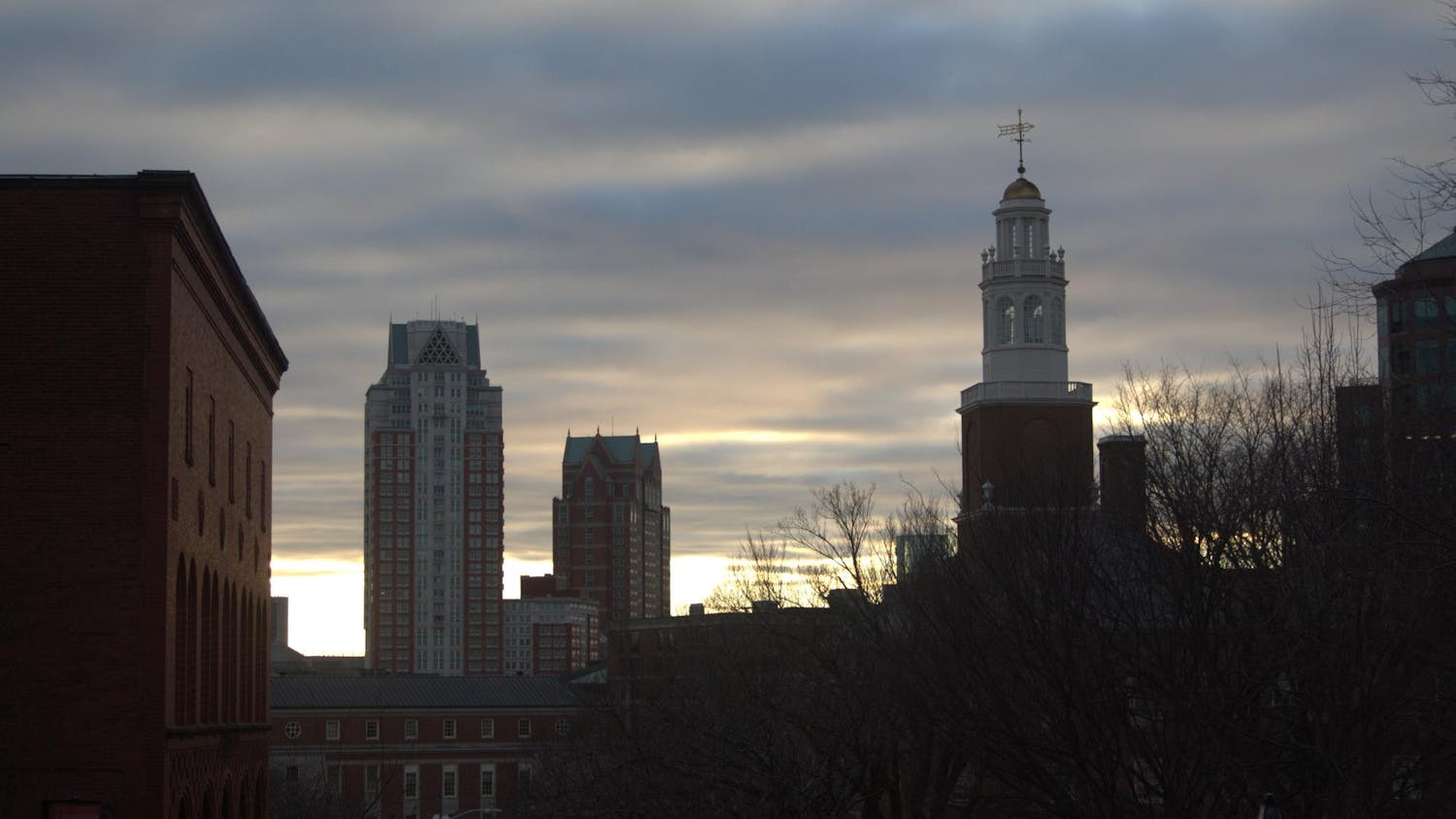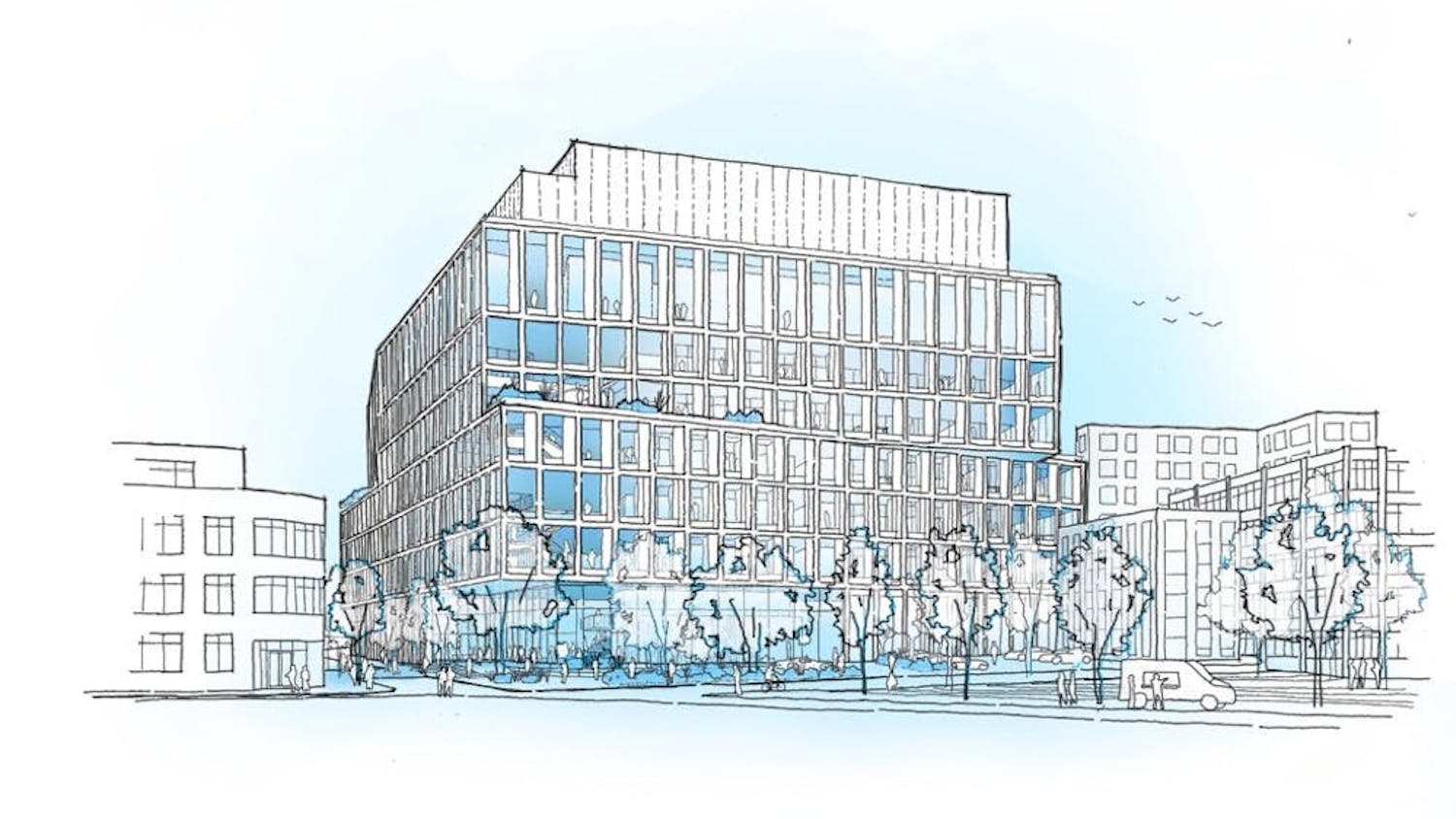Several years ago, Interstate 195 ran through the heart of Providence's Jewelry District. But since it was rerouted, city officials have been planning various uses for the now vacant land, hoping to see the neighborhood become part of a "Providence Renaissance." Last year, the state created the I-195 Redevelopment District Commission to oversee the neighborhood's renovation, and the group is now at the recommendation stage.
Colin Kane, chairman of the commission, addressed the Fox Point Neighborhood Association Wednesday to inform the group, which represents land under the commission's jurisdiction, about the upcoming changes. Kane focused on his plans for the east side of Providence but also described his overall vision for the 20 acres.
The commission's work is immense and complicated, Kane said. "When we started, we had 25 projects embedded in the 20 acres, and we had to figure out how those projects worked with each other and with their surrounding neighborhoods," he said.
The logistics of trying to balance a number of conflicting interests has not always been easy, Kane said. "I will meet with preservation committees for lunch and unions for dinner," he said.
The I-195 Commission received a $250,000 state loan in January for planning, but multiple news outlets reported yesterday that the group is out of money and has requested more funds to hire an executive director to move forward with plans. Kane did not directly address the commission's financing at last night's meeting, but made a few references to its lack of funds.
During the presentation, Kane said he was not operating under the assumption that all parties would approve of the commission's plans. "We can't be perfect, but we can be really good," Kane said.
So far, the commission has worked on the more functional, "less fun," parts of development, Kane said. They are planning roads and utilities more often than they are courting industry, or working on the city's aesthetics. "If we don't get the underground stuff right, we won't be building anything on top," Kane added.
Kane said he is very optimistic about the city's potential. "As Rhode Islanders, we are all inclined to think everything stinks...but when you walk around this city, you see so much potential," he said.
Kane cited the hospital district, Johnson and Wales University's growth, Hasbro's current construction and the success of 38 Studios, a video game company, as indications that the city has weathered the storm of the recession.
The first project in the neighborhood will be two and a half years of road construction. "We are going to do our best to keep it clean. It will be relatively messy, because we're opening up streets and putting in utilities, but we promise to keep those Dunkin' Donuts cups that you see at any construction site to a minimum," Kane said. The city will build the roads on the west side this summer and the east side the following summer, he added.
Kane said despite recent negative publicity, the city should be very thankful that Brown and Johnson and Wales want to expand into the new district. New York had to "give away" Governors Island to incentivize institutional investment, he added.
When the time comes to sell the plots of land in the district, the city could attract companies willing to put in as much as $100 million, Kane said. But as exciting as that kind of investment would be for the city, the commission would still need to ensure the project fits within the overall landscape of Providence, he said.
The city has zoning requirements and parking needs that could somewhat limit the freedom with which interested companies can buy the neighborhood's land, Kane said. The commission will enforce the requirement that any company that purchases land must start building within a year of signing the papers, he said. This measure will prevent companies and other organizations, like the University, from buying land and holding it rather than beginning construction as soon as possible, he added.
Kane also answered questions from members of the FPNA. Members asked Kane about some of the commission's less popular work. One woman asked why the commission recommended cutting the total amount of public park space three-quarters of an acre. Kane said the cut was small, and it allowed for an additional 200,000 to 300,000 square feet of office space in west Providence.
The FPNA as a group has declared its opposition to allowing buildings on the east side to be above three stories. Kane said he believes this height places an impractical limitation on retail in the area and would recommend the buildings be allowed to reach five stories.




